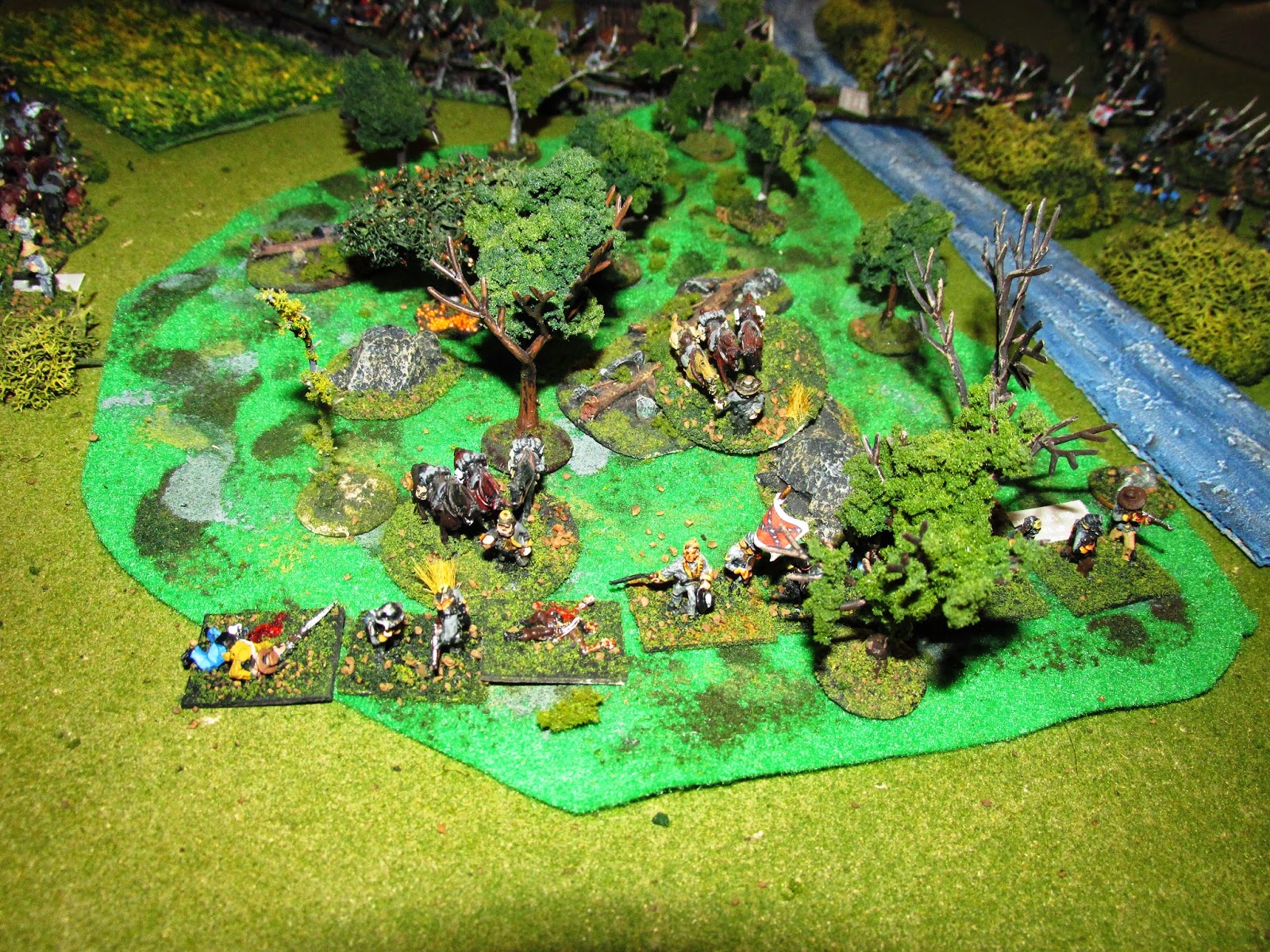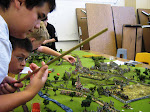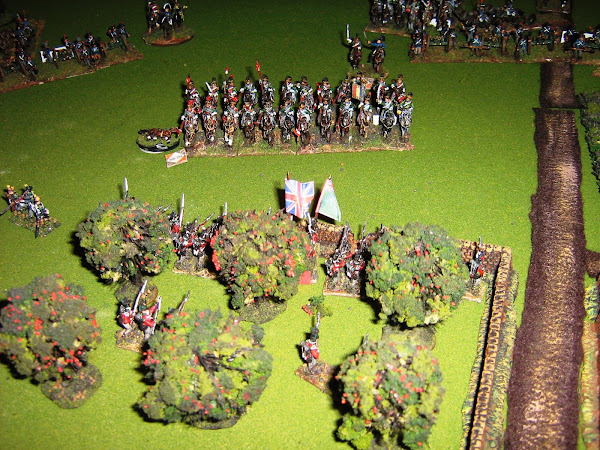 |
| The depleted 4th Va holding the wood |
 |
| Karas's men unleash a volley that does still more damage to the 4th Va |
 |
| After the repulse of the 3rd NY, the 19th MS is able to go into line of battle |
Turn 12- Karas leads one of his regiments in a charge on the fragile 4th Va. The Virginians hold their fire until the last minute and surprise the yankee infantry with a stunning volley. When the smoke clears, Karas's horse is seen galloping off riderless. His men press on, but are only able to just barely push back the rebel cavalry.
At the bridge, General Freeman is desperately trying to give orders to the cowering men all around him. As he does, a reb cannon ball finds him and mortally wounds him. There is now no one to sort things out on the west side of the bridge.
 |
| The moment when Dinwiddie is killed at the head of his Mississippians |
 |
| The 9th SC blazes away at Karas's men |
 |
| The carnage just west of the bridge |
 |
| The success that cost Karas his life |
 |
| The rebel battery rolls a "10" |
 |
| Cash rolls a "10" on the leader loss chart. He is killed instantly |
 |
| The Union left flank is secured |
For the Confederates, their losses have been moderate. Culbert's cavalry has fought well and paid the price. Herringbone's South Carolina brigade will need to be pulled out of the line to refit. It will be up to Dinwiddie's Mississippians to hold the line until reinforcements can arrive. Shelbyville has been saved, but just barely.
The casualties for the battle were as follows:
Confederates
Purdy's Cavalry 360, including 2 guns
Herringbone's (k) Brigade 360
Dinwiddie's (k) Brigade 80
800
Union Cash's (k) Division
Freeman's (k) Brigade 880 (entire 6th NJ killed or captured)
Karas's (k) Brigade 120
Herringshaw's (k) Brigade 600
1600
The Union clearly paid a very high price in their effort to take Shellbyville. Though most of the yankees were either trained or green, they fought bravely. They suffered from the narrow approach to getting into the battle. The Confederates, on the other hand, had the advantage of the higher ground and could find cover in the defense. The most significant statistic, however, is the number of general officers that were lost on both sides. I have never had such a staggering percentage of commanders fall in the same battle.
Final thoughts- This was a fun battle. The random arrival of troops added an element of suspense. The biggest problem for the Union was that they just had one crossing point. That bottleneck proved to be their downfall. The Confederate cavalry was hard pressed, but managed to tie up the yankee infantry long enough for help to arrive.
The Union artillery was splendid. Time and again it bested its southern counterparts and then punished any infantry that tried to take up a position overlooking the bridge. But the Confederate gunners certainly got in their licks, and three "10's", though depleting their ammo, also took out three yankee commanders. And that was the real difference in the game.


Excellent battle report Duke and splendid figures!!!
ReplyDeleteYes a very enjoyable report and an excellent table too!
ReplyDelete